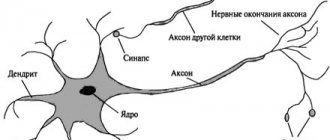Consciousness and self-awareness
Consciousness , the highest function of the brain, is characteristic of living nature only to humans.
This function is directly related to speech and is expressed in the brain’s ability to perceive, reflect and process information coming from the surrounding reality, in the ability to plan actions and anticipate their results, in the ability to control and regulate behavior.
Consciousness consists of various components: attention, memory, will. Each of them performs a specific function. Thus, attention allows you to assimilate information coming from outside.
Memory contributes to the understanding of this information and the ability to use it in the future. And will helps to focus oneself on achieving goals and obtaining the desired results.
The mind helps a person to understand the world around him and to function successfully in society.
By acquiring knowledge about himself, about other people, about nature, about the laws of social life, a person gets the opportunity to successfully socialize in his environment.
Also, thanks to consciousness, the manifestation of imagination becomes possible . People can not only perceive real objects and phenomena, but also reproduce in their minds any desired images.
It is this property of the psyche that allows you to create works of art and make scientific discoveries .
With the help of consciousness, a person evaluates his actions and their compliance with existing requirements.
He develops principles of self-control , regulation of his behavior.
Consciousness allows you to both navigate the present and predict the future, make plans, and anticipate the development of events.
Self-awareness, a special higher form of thinking. It allows you to perceive yourself as a physical organism, as a person, with its inherent qualities, attitudes, emotions and feelings.
A person has the opportunity not only to objectively assess his own individual traits , but also to successfully integrate into the environment.
Thanks to the presence of self-awareness, a person receives the opportunity for constant self-development and self-improvement. He freely defines his desires and needs.
The essence of the phenomenon of consciousness
A. N. Leontyev studied the patterns of mental development. He did this in the context of a materialistic understanding of the psyche as the highest form of reflection of objective reality (activity approach). When studying the issue of the origin of sensation and the mechanisms of sensory reflection, Leontiev identified and characterized the main stages of the development of the psyche.
Are you an expert in this subject area? We invite you to become the author of the Directory Working Conditions
In its evolution, the psyche goes through a number of stages, which begin with the sensory, and end with the perceptual and then the intellectual stage. Finally, the formation of consciousness occurs. Consciousness is a feature of the psyche, which becomes a product of socio-historical development. The possibility of the existence of consciousness is associated with the use and production of tools, the beginning of the use of elements of language, knowledge and norms of behavior in society.
To explain the possibilities of improving the human psyche based on social experience, I.P. Pavlov introduced the concept of the first and second signal systems.
The first signaling system is a type of signaling system that involves the orientation of animals to a direct stimulus (for example, a visual, auditory, tactile signal associated with adaptive conditioned and reflex reactions).
The second signaling system concentrates more on symbolic, primarily verbal, signals. On their basis, temporary nerve connections are formed.
Finished works on a similar topic
Course work Consciousness as the highest level of mental reflection 440 ₽ Abstract Consciousness as the highest level of mental reflection 260 ₽ Test work Consciousness as the highest level of mental reflection 190 ₽
Receive completed work or specialist advice on your educational project Find out the cost
Humans are characterized by the combined action of these two signaling systems. For this reason, I.P. Pavlov proposed considering specific types of higher nervous activity with a predominance of the corresponding system. Depending on this, the artistic type is defined as the predominance of the first signaling system, the mental type - of the second system. The average type is balanced on this basis.
Origin
There are two key concepts:
- Idealistic . Consciousness appears in human nature without the intervention of any earthly laws. There are various attempts to explain this approach. Thus, Kant was of the opinion that reason exists in God and at the moment a person is born, it inhabits him. From a religious point of view, a person is initially born without consciousness, but in the first weeks of his life it penetrates into the body along with the soul.
- Materialistic. Reason is the result of a person’s ability to reflect all the diversity of surrounding reality. This concept is represented by three main theories: labor theory, genetic error theory, and bifurcation theory.
The labor approach is based on Charles Darwin's theory of the origin of species. The reason for the development of abilities lies in the joint work of people, the emergence of the need to use speech to communicate with each other.According to the theory of genetic error, man became the result of a failure in the evolutionary development program. And the bifurcation theory focuses on the possibility of a powerful leap in the development of nature, as a result of which a person with a formed mindset appeared.
Kornienko A.F. — The concept of consciousness as the highest level of mental development
A.F. Kornienko Article on general psychology Siberian psychological journal. – 2010. – No. 36. – P. 20-26.
The article is devoted to the essence and scientific definitions of the concepts of “consciousness” and “awareness”, which are fundamental and one of the basic concepts of psychology. The inconsistency and unsatisfactoriness of the formulations of these concepts in the works of classics of Russian psychology and in modern publications in which attempts are made to rethink them are shown. The author's definitions of the concepts “consciousness”, “awareness”, “conscious” and “unconscious” are proposed. Consciousness is defined as a special cognitive mental process, the result of which is the formation in the human psyche of the image of “I” and the reflexive psyche.
Key words: psyche, consciousness, awareness, conscious, unconscious, image of “I”, reflexive psyche.
For a long time, the concepts of “psyche” and “consciousness” were not differentiated and were actually used as synonyms. As noted by A.N. Leontyev, “it took centuries to free ourselves from the identification of the mental and the conscious” [12. P. 166]. However, even now quite often one can find the use of the term “consciousness” in a much broader sense, which is equivalent to the understanding of the term “psyche”. This is most clearly manifested in the use of such phrases as “reflection in consciousness”, “processes occurring in consciousness” or “direction of consciousness”, “states of consciousness”. As noted by G.V. Akopov, “the explicit or implicit identification of consciousness and psyche is consistently reproduced throughout the history of Russian psychology” [2. P. 22]. To some extent, this is due to the reverent attitude towards the definitions of consciousness formulated by S.L. Rubinstein and A.N. Leontyev.
“Consciousness,” writes S.L. Rubinstein, is a specific form of reflection of objective reality that exists outside and independently of him” [16. P. 20]. Obviously, without any amendments or additions, this definition can be used in relation to the concept of “psyche”. Visualized form of the definition of S.L. Rubinstein is shown in Fig. 1.
Rice. 1. Visualized form of the definition of consciousness as edited by S.L. Rubinstein.
Statement by S.L. Rubinstein that “in psychological terms, consciousness appears in reality, first of all, as a process of a person’s awareness of the surrounding world and himself” [16. P. 150], is essentially tautological, since the concept of “consciousness” is defined through the concept of “awareness”, which includes the original concept of “consciousness”.
According to the definition of A.N. Leontyev, “consciousness in its immediacy is the picture of the world that is revealed to the subject, in which he himself, his actions and states are included” [12. P. 166]. Considering that, in the general case, the picture of the world that reveals itself to the subject is a subjective image or a subjective reflection of objective reality, and it is designated by the concept of “psyche,” it turns out that “consciousness,” according to Leontyev, is the psyche of the subject with the addition of the image of the subject himself. As we see, what is understood as the psyche turns out to be included in the composition of consciousness, and consciousness itself is understood simply as the psyche expanded in content. Hence the synonymy in the use of the concepts “psyche” and “consciousness”.
Visualized form of definition of consciousness according to A.N. Leontiev is shown in Fig. 2.
Rice. 2. Visualized form of definition of consciousness as edited by A.N. Leontyev
The problem in defining consciousness, in our opinion, is that it is not considered as a mental process. Being recognized as the highest level of mental development, consciousness is not included in any of the classifications of mental processes. It is not included in the traditional classification, presented, for example, in the textbook of general psychology by A.G. Maklakov [13], nor in the “rational” classification of N.I. Chuprikova [19], nor the “functional” classification of V.V. Nikandrova [14]. Usually it is considered not as a mental process, but as some kind of integrative formation in which all mental processes are integrated in a special way. According to the definition of V.I. Ginetsinsky, “consciousness as an ingredient of the psyche acts as a result of the integration of individual mental functions, as an invariant of their diversity” [4. P. 95]. “Interpretation of consciousness as the integration of mental processes,” notes G.V. Akopov, is a fairly common way of defining consciousness in psychology” [2. P. 21].
However, endowing consciousness with the function of integrating mental processes deprives consciousness of the status of an independent mental process and, accordingly, the process of reflection. Integration or any form of organization of mental processes in itself is not a special mental process and, accordingly, a process of reflection. At the same time, recognizing consciousness as the highest level of development of the psyche, the definition of which emphasizes its reflective function, one should obviously preserve this reflective function in the definition of consciousness. Moreover, the content reflected in the psyche due to consciousness should be correlated as more complex in comparison with the content that is reflected due to the mental processes of sensation, perception and thinking, which characterize the psyche at its lower levels of development compared to consciousness. The definition of consciousness as an integrator of mental processes does not allow this to be done.
It also makes sense to abandon the integrating function of consciousness for another reason. By attributing to consciousness the function of an integrator of mental processes, we actually admit that before the emergence of consciousness, that is, at all previous stages of mental development, integration of mental processes was not carried out. However, this is clearly not the case. Without the integration of mental processes, ensuring the adequacy of the interaction of the organism with the environment would be simply impossible. In interaction with the environment, any organism acts as a single whole in the unity and interconnection of all its structures and functions. Since the main function of the psyche is to ensure the adequacy of the organism’s behavior to the conditions in which this behavior is realized, mental processes at each level of mental development cannot but be coordinated and integrated. The reference to the fact that the emergence of consciousness is associated with a special integration of mental processes practically does not change anything - at each level of mental development there is its own special form of integration of mental processes. The difference between “integration” and the interrelation and continuity of mental processes, the presence of which even in simpler species of living beings was pointed out by G.I., is also not clear. Chelpanov [18]. In addition, a problem arises with the differentiation of the concept of “integration” in relation to such concepts as “functional system” by P.K. Anokhin or “mental state” V.D. Levitov, which are also directly related to “integration” and various forms of organization of mental processes.
In our opinion, V.M.’s ideas about consciousness are problematic and extremely unproductive. Allahverdov [3] in the “psychology” he developed, which claims a special form of organization of scientific psychological knowledge, alternative to classical psychology. Not only is it proposed to deprive the psyche (and consciousness, in particular) of the generally accepted function of reflection and regulation of behavior, citing the fact that such a point of view is nothing more than a “habitual banality”, consciousness in the definitions of V.M. Allahverdova seems to be something like a homunculus, which “explains everything”, can “guess about the causes of observed phenomena”, “check the validity of one’s guesses”, “think”, “make a decision about what should be realized and what should obviously not be realized” " and so on. But if all this is done by consciousness, then what is left to the lot of man?! Attributing to consciousness the ability to perform functions that are usually considered a human function (a person can explain, guess, make a decision, realize, think, etc.), V.M. Allahverdov actually mythologizes the concept of “consciousness.” And here he is not original. A similar interpretation of consciousness existed in psychology back in the time of T. Lipps (1863-1914). Touching on the problem of the substrate of consciousness, T. Lipps introduced the concept of the real “I”, close in meaning to the concept of “soul”, and proposed to consider this “real “I”” as the source and bearer of the phenomena of consciousness. In connection with criticism of his proposal, he wrote the following: “The prohibition to talk about the real “I” or about the substrate of the phenomena of consciousness turns out to be not as harmless as it might seem at first. It introduced the temptation to put something else in the place of the substrate of the phenomena of consciousness, namely “consciousness” itself... In this way, consciousness arose, which reproduces the contents of consciousness, senses, thinks, feels, wants... Thus, trying to avoid the imaginary metaphysics of the soul, they created mythology of consciousness” (Quoted from [11. P. 26]).
Unproductive ideas include the idea of V.M. Allahverdov about the multiplicity of consciousnesses, about the presence of such “consciousnesses” as “sensory”, “motor”, “sensorimotor”, “verbal”, etc. In our opinion, this is exactly the case when, in the words of G.V. Akopov, “ever increasing accumulations and blockages in the psychological problems of consciousness not only do not bring the long-awaited solution closer, but also raise doubts about the justification and expediency of the very concept of “consciousness” in psychology” [2. P. 12].
We see the solution to the problem of defining consciousness in considering consciousness not as a special psyche with the addition of the image of “I” or its “integrative” quality, and certainly not as a mechanism with the ability to “explain,” “put forward and test hypotheses,” “accept decision about awareness or unawareness”, etc., but as a special mental process belonging to the group of cognitive mental processes, as a result of which a special image is formed in the human psyche - the image of “I” [5, 9]. The “specialness” or specificity of this image lies in the fact that it is the image of the subject himself as a bearer of the psyche, and arises exclusively in the human psyche in the process and as a result of his interaction with other people. If we use the term “real “I””, introduced by T. Lipps, but not to designate the soul as the substrate or source of the phenomena of consciousness, but the subject itself, possessing consciousness, then the image of the “I” turns out to be a reflection in the psyche of the subject of that real “I” , which this subject is. And the question should be posed not about what consciousness does, but about what a person (the real “I”) who has consciousness can do. The same applies to other mental processes, in particular, thinking - it is not thinking that solves problems, but a person solves problems with the help of thinking processes; The task is not put before thinking, but before a person.
It is obvious that the image of “I”, as the image of the bearer of the psyche, includes the image of the psyche (according to the “matryoshka” principle), and therefore is a complex mental formation. Essentially, as a result of a cognitive mental process called consciousness, an image of the psyche itself appears in the subject’s psyche. In contrast to the initial or primary psyche, the psyche reflected in the image of “I” can be called the secondary or reflexive psyche, and the process of formation of the reflexive psyche itself can be called the process of reflection. The image of “I”, thus, represents many images of the reflexive psyche, each of which is the result of a separate reflexive process. In this case, the reflexive process is understood as the process through which the image of the primary psyche becomes the property of the secondary or reflexive psyche. The basis of this process is the process of awareness (as a special form of the thinking process), as a result of which a connection is formed between the image of the primary psyche and the image of the “I”. It is interesting to note that the reflexive psyche includes not only reflexive images of objects of external reality, but also a reflexive image of the subject himself, that is, a reflexive image of “I”, which, apparently, can be correlated with the concept of “self-consciousness” [6].
If by consciousness we understand not only the process of formation of the image of “I”, but also the image of “I” itself, as a result of this process (by analogy with the concept of “reflection”, which is considered both as a process and as a result), then the use of such expressions as “in the psyche” and “in consciousness” while maintaining the specificity of their semantic content. In the first case, we are talking about what is or is happening in the primary psyche, in the second case, in the secondary or reflexive psyche.
Having defined consciousness as a special cognitive mental process, we can imagine the development of the psyche in the form of the following chain of continuously increasingly complex processes of mental reflection: sensation - perception - thinking - consciousness. Sensations reflect individual properties of objects and phenomena of the near future of objective reality ; in perceptions – individual objects and phenomena in the totality of their properties and qualities; in thinking - the relationships of objects and phenomena and holistic situations; in consciousness – the subject himself as the bearer of the psyche.
In Fig. Figure 3 presents a diagram explaining the essence of the concept of “consciousness” as a cognitive mental process, the result of which is the formation in the subject’s psyche of an image of “I”, a reflexive psyche and a reflexive image of “I”.
Rice. 3. Consciousness as the highest level of development of cognitive mental processes, ensuring the emergence in the subject’s psyche of the image of the subject himself as the bearer of the psyche (the image of “I”).
Directly related to the concept of “consciousness” is the concept of “awareness”. In the psychological literature, the concept of “awareness,” like the concept of “consciousness,” does not have a clear definition and is often used as a synonym not only for the concept of “consciousness,” but also for the concept of “understanding” (for example, in the expression “I am aware (conscious/understand) ), What …").
An example of an extremely confusing and absurdly contradictory definition of the concept of “awareness” is the definition of Doctor of Psychological Sciences A.Yu. Agafonov, who is a student and follower of V.M. Allahverdova. Believing that awareness is “the final result, an integral mental product of the activity of consciousness,” A.Yu. Agafonov writes: “any conscious effect is a consequence of the unconscious activity of consciousness” [1. P. 10-11]. And this activity, according to the author, consists in the consciousness making a decision about awareness. “Both awareness and unconsciousness,” notes A.Yu. Agafonov, are interpreted as the final results of the cognitive process, in which one of the stages is “making a decision about awareness/unconsciousness” [Ibid. P. 13]. If you follow the logic of A.Yu. Agafonov, it turns out that awareness is the result of the activity of consciousness in making a decision about awareness, which is carried out by consciousness unconsciously. Amazing!!!
Unlike A.Yu. Agafonov, we understand awareness as the result not of consciousness, but of thinking [11].
Awareness is always awareness of “something”, and this “something” is always realized by “someone”. Being a mental phenomenon, awareness is a connection, on the one hand, with the image of “I”, which is the result of consciousness and a reflection of the one who is able to realize, and, on the other hand, with the image of “something”, which is the result of any other process occurring in psyche of mental process. The formation of the very connection between these images is carried out thanks to the processes of thinking. Thinking, by definition, is a cognitive mental process of reflecting connections and relationships between objects and phenomena of reality in the psyche. Since objects and phenomena of reality are reflected in the psyche in the form of images, the reflection of connections between objects is tantamount to the formation in the psyche of connections between the images in which these objects are reflected. To realize something means to connect the image of this “something” with the image of “I”, and the formation of this connection is carried out as a result of the thinking process. Considering that the formation of connections between images is what we call understanding, it is not difficult to understand why the terms “awareness,” “awareness,” and “understanding” are often used interchangeably.
Obviously, not all images that arise in the human psyche will be associated with the image of the “I,” but only some of them, in particular, those that reflect something that has a fairly high degree of significance for him. Thus, what is realized is what is reflected in cognitive mental processes and causes quite intense emotional reactions.
The totality of images associated with the image of the “I”, including the image of the “I” itself, represents a special area of the psyche, for which the well-known phrase “region of the conscious” is quite suitable. Accordingly, many other images available in the psyche that do not form direct connections with the image of the “I” constitute the content of that part of the psyche that can be designated as the region of the “unconscious”. Thus, the human psyche appears in the unity of the “conscious” and the “unconscious,” which was emphasized, in particular, by C. Jung. “Consciousness and the unconscious,” wrote K. Jung, “do not have clearly defined boundaries; one begins where the other recedes. The fact is that the psyche is a conscious-unconscious whole" [20. P. 397]. Since the volume of the “conscious” area is significantly smaller than the volume of the “unconscious” area, and the regulation of human behavior and activity is carried out on the basis of the entire psyche (as stated in one of the basic principles of psychology - the principle of “unity of the psyche and behavior”), it turns out that most of the actions a person’s actions and deeds are determined by the content of what is located and happening in the area of the “unconscious”. The special significance of the “unconscious” in the regulation of human behavior was drawn to the attention of S. Freud [17], who laid the foundations for an essentially new branch of psychology – the psychology of the unconscious – and a new direction in psychotherapeutic practice, called psychoanalysis.
The area of “consciousness”, as a part of the human psyche, the appearance of which is determined by the appearance of consciousness in him, is that secondary psyche, which we designated by the term “reflexive psyche”. It is interesting to note that the initial content of the image that falls into the “conscious” region as a result of the formation of a connection between this image and the image of the “I” does not essentially change, it becomes only conscious or presented in the psyche to a representative of the real “I”, in which the “Image of “I”” appears. Obviously, the same can be said in relation to the content of the image, which ceases to be the property of the “conscious” area and passes into the “unconscious” area when its connection with the image of “I” is broken for some reason. In this regard, I would like to quote the following quote from the work of C. Jung: “So, we come to the question: in what state are mental contents when they are out of touch with the conscious ego? ... the most cautious conclusion would be the following: when a certain content becomes unconscious, nothing changes, except for the connection with the conscious ego" [20. P. 383].
From the definitions that we have given to the concepts of “understanding” and “awareness”, it follows that any awareness is understanding. But not all understanding is awareness! Awareness is only such an understanding in which the image of “I” acts as one of the associated images. Awareness is a narrower concept in relation to understanding and is a special type of understanding inherent in a person who has consciousness.
Considering that understanding is the result of thinking as a cognitive mental process, and the result of any mental process is an image, we can conclude that understanding is not only the process of establishing connections between images, but also an image. This image is a set of interconnected images and can be called an “image of understanding” or a “way of thinking” (by analogy with the concepts of “image of perception”, “image of memory”, “image of imagination”). When a special image appears in the psyche - the image of understanding - and if there is an image of “I” there, a mutual connection can be established between these two images thanks to the process of thinking, and in this case we can talk about the emergence of awareness of understanding in a person. Typically, awareness of understanding is accompanied by quite violent emotional manifestations in the form of experiences, which at the verbal level can be expressed by an exclamation like “Eureka!”
The essence of the concepts “consciousness”, “awareness”, “understanding” and “awareness of understanding” is clearly shown in Fig. 4. The diagram presented in the figure was reproduced by us earlier in [7, 8]. This diagram also shows that the totality of images associated with the image of the “I”, including the image of the “I” itself, constitutes the “conscious” area in the psyche. Many other images available in the psyche that do not form direct connections with the image of the “I” constitute the content of the “unconscious” region.
Rice. 4. Processes of awareness, understanding and awareness of understanding that arise in the human psyche due to the cognitive mental processes of consciousness, thinking, perception, memory and imagination.
The proposed understanding of the concept of “awareness” allows us to talk about different options for awareness:
a) awareness of the entire set of objects in the situation or only part of it;
b) awareness of full or partial understanding of the situation.
When we consider human behavior, depending on what and to what extent he is aware, we will have different types or forms of behavior. With awareness of the totality of objects in the situation (all or only part) and awareness of the understanding of the situation (full or partial), behavior can be called “conscious” or “conscious” (to a greater or lesser extent). If there is awareness of the totality of objects in the situation, but there is no awareness of understanding, then the behavior can be called “intuitive.”
In the absence of awareness of the entire set of objects in the situation, awareness of the understanding of the situation, apparently, should also be absent. However, understanding the situation itself is in principle possible, since the mental processes of perception, memory, and thinking can work and perform their functions of reflecting reality. In this case, the mechanism for regulating human behavior without the participation of consciousness can be called “autopilot” (by analogy with the name of the mode of movement of an airplane, when the pilot is not directly involved in controlling its flight). In this case, a person can be both in an unconscious state and in a conscious state. In the first case, there is either a violation of the process of formation of the image of “I”, that is, the process of consciousness, or a violation of the process of formation of the connection of the image of “I” with other images, that is, the process of awareness. An example of such an “autopilot” form of behavior is the behavior of a person in a state of severe alcohol intoxication. In the second case, the processes of consciousness and awareness are not disrupted, but the person imagines himself to be not in a “here and now” situation, but in a “there and then” situation. In this case, his image of “I” is associated with images of objects in this other imagined situation, and all movements and movements of the body in the current situation continue to be regulated by mental processes and images from the area of the “unconscious”, that is, from the area of the “unconscious”. Such behavior and the corresponding mechanism for its regulation are usually called not unconscious, but “unconscious” or “mechanical”.
Our analysis of one of the fundamental problems of psychology, related to the definition of the essence of consciousness as the highest level of development of the psyche, allows us to conclude that the origins of the problem lie in the insufficiently clear differentiation of the concepts of “psyche” and “consciousness”, “consciousness” and “awareness”, “ awareness" and "understanding" and in an overly loyal, and perhaps even dismissive, attitude towards the presence of both formal-logical and semantic contradictions in their formulations. Realizing the importance of building a consistent system of psychological concepts, K.K. Platonov at one time spoke bitterly about [15. P. 10]. It cannot be said that now the state of affairs with regard to the formulation and use of such, in particular, basic concepts of psychology as “consciousness” and “awareness” has changed significantly. The difficulty of revealing the essence of consciousness was aggravated by the fact that as a result of the long-term identification of consciousness with the psyche, the idea that consciousness, being the highest level of development of the psyche, could be only one of the mental processes included in the structures of the psyche, was in principle not allowed. Although, as it turned out, this idea is not so seditious. It is precisely giving consciousness the status of a special cognitive mental process, as a process that provides the possibility for the subject (the bearer of the psyche) to obtain knowledge about himself as a bearer of the psyche, that makes it possible to resolve many seemingly insoluble problems of psychology.
Literature:
1. Agafonov A.Yu. Cognitive psychomechanics of consciousness or how consciousness unconsciously makes decisions about awareness. – Samara: Publishing House “Bakhrakh-M”, 2007.
2. Akopov G.V. The problem of consciousness in Russian psychology: Textbook. allowance. – M.: Publishing house Mosk. Psychosocial Institute; Voronezh: Publishing house NPO "MODEK", 2004.
3. Allahverdov V.M. A methodological journey across the ocean of the unconscious to the mysterious island of consciousness. – St. Petersburg: Publishing house “Rech”, 2003.
4. Ginetsinsky V.I. Propaedeutic course of general psychology. Textbook allowance. – St. Petersburg: St. Petersburg Publishing House. University, 1997.
5. Kornienko A.F. Structure of mental processes //Yearbook of the Russian Psychological Society: Materials of the 3rd All-Russian Congress of Psychologists. June 25-28, 2003: In 8 volumes - St. Petersburg: St. Petersburg Publishing House. University, 2003. – T.IV. – pp. 383-387.
6. Kornienko A.F. Problems of consciousness, awareness and self-awareness // Psychology of consciousness: current state and prospects. Materials of the I All-Russian Conference, Samara, June 29 - July 1, 2007 - Samara: Scientific and Technical Center Publishing House, 2007. - P. 61-63.
7. Kornienko A.F. Psychological mechanisms of social determination of human consciousness and self-esteem // Bulletin of the University (State University of Management). No. 2 (50). – M.: State University of Education, 2008. – P. 85-88.
8. Kornienko A.F. Why does a living organism need a psyche and what is it? // Russian scientific journal. – 2009. – No. 3 (10). – P. 47-60.
9. Kornienko A.F. Psyche and mental processes: a unified system of psychological concepts // Russian scientific journal. – 2009. – No. 4 (11). – pp. 78-89.
10. Kornienko A.F. Processes of thinking, understanding, consciousness and awareness // Psychology of cognitive processes / Materials of the 3rd international scientific and practical conference, Smolensk, May 14-15, 2009; Ed. A.G. Egorova, V.V. Selivanova. – Smolensk: Universum, 2009. – P. 47-54.
11. Kurennoy V. On the issue of the emergence of the phenomenological movement // Logos 1991–2005. Favorites: In 2 volumes. T. 2. – M.: Publishing house. house “Territory of the Future”, 2006. – pp. 9-46.
12. Leontyev A.N. Activity. Consciousness. Personality // Selected psychological works: In 2 volumes. T. II. – M.: Pedagogy, 1983. – P. 94-231.
13. Maklakov A.G. General psychology. – St. Petersburg: Peter, 2001.
14. Nikandrov V.V. Psychology. – M.: TK Welby, Prospekt Publishing House, 2008.
15. Platonov K.K. System of psychology and theory of reflection. – M.: Nauka, 1982.
16. Rubinshtein S.L. Fundamentals of general psychology. – St. Petersburg: Peter, 2001.
17. Freud Z. Psychology of the unconscious: Sat. works / Comp., scientific. ed., author entry Art. M. G. Yaroshevsky. – M.: Education, 1990.
18. Chelpanov G.I. Classification of mental phenomena //Essays on psychology. – M.-L.: Moscow. acc. ed. about-vo., 1926. – P. 58-63.
19. Chuprikova N. I. System of concepts of general psychology and functional system of mental regulation of behavior and activity // Questions of psychology. – 2007. – No. 3. – P. 3-15.
20. Jung K. On the nature of the psyche / Translation by S.L. Udovik. 2001. [Electronic resource]. – URL: https://www.jungland.ru/node/1592 (access date: 01/16/2010).
Criteria, stages, levels
There are three stages in the development of internal perception:
- Ideas about your physical body, defining yourself as a separate organism.
- Attributing oneself to a certain social group, perceiving one’s personality from the point of view of its social role.
- Full perception of your “I” The individual develops his own value systems, he feels like a full-fledged person.
The criteria for self-awareness include :
- degree of autonomy from other subjects of society,
- level of activity (ability to manage oneself),
- recognizing in others qualities that are inherent in one’s own personality,
- the presence of reflection, the ability to understand oneself, self-improvement and development.
Using these criteria, you can determine the degree of an individual’s internal perception of his personality , identify existing problems and internal disagreements.
Thus, with a high degree of reflection, activity and autonomy, we can talk about the integrity of the individual and its successful integration in society without compromising one’s own individuality.
Levels of self-awareness:
- direct-sensory (sensations, experiences),
- holistically-shaped (maintaining one’s “I”),
- reflective (self-observation, self-analysis),
- purposeful-active (synthesis of the three previous levels, as a result of which numerous motivational, behavioral forms of thinking are formed: self-control, self-expression, self-esteem, etc.).
Consciousness as the highest stage of mental development
Consciousness is the highest level of mental reflection. This form is characteristic of humans and is intended to reflect the objective stable properties and patterns of the environment. Thanks to it, people develop an internal model of external reality. Consciousness helps to understand and change the world around us.
The function of consciousness as the highest form of reflection is to create goals of activity, when the mental construction of actions and the anticipation of their results are first carried out. This process is designed to ensure reasonable regulation of human behavior and activities.
Consciousness includes the appropriate attitude of a person to the environment and to the people around him. It is customary to distinguish several properties of consciousness:
- Relationship building;
- Cognition;
- The process of experiencing.
This implies the direct inclusion of thinking and the emotional sphere in the processes of consciousness. The main function of thinking is represented by the determination of objective relations between the phenomena of external reality. The main function of emotions is to create a person’s subjective attitude towards people, objects, and phenomena.
In the structure of consciousness there is a synthesis of these forms and types of relationships. They help determine both the organization of behavior and the underlying processes of self-esteem and self-awareness. Really existing in a single stream of consciousness, images and thoughts are capable of being colored with the help of emotions and become experiences.
The development of consciousness occurs in an individual mainly in social contacts. In phylogenesis, it was improved and became possible under the condition of active influence on the natural environment in the conditions of labor activity. Consciousness manifests itself only with the existence of language and speech. These processes arise at the same time as consciousness during the labor process.
The primary act of consciousness is represented by the act of identification with cultural symbols. They organize human consciousness and make man human. Following the identification of meaning, symbols and identification with it comes the implementation and active activity of children in the field of reproducing patterns of behavior, speech and thinking. Consciousness is characterized by the active activity of the child, reflecting the world around him and the regulation of behavior.










